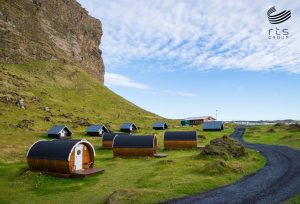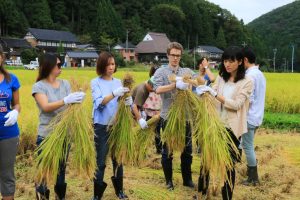
What is sustainable tourism?
Tourism is the world's largest and fastest-growing industry, accounting for 10% of global GDP, and one in eleven jobs on the planet. It is also one of the world's fastest growing sources of greenhouse gas emissions, and at the same time, it has the potential to provide a model for sustainable development, both locally and globally. It is the practice of tourism in a way that minimizes negative economic, social and environmental impacts, and maximizes the benefit to the local tourism industry's economic, social and environmental viability.
Sustainable tourism is tourism that takes full account of its current and future economic, social and environmental impacts, addressing the needs of visitors, the industry, the environment and host communities. It is about making better places for people to live in and better places to visit.
For tourism to be sustainable, it must be a continuous process. It is imperative to monitor impacts continuously, that is, introduce appropriate corrective or prevention measures whenever necessary, for it to be a success. Sustainability should ensure that tourists achieve a high level of satisfaction as well as provide them with a worthwhile experience, promote sustainable tourism practices among visitors, and raise their awareness about issues related to it.
Several types of sustainable tourism exist, but the most important thing you need to do before planning a sustainable trip is to do your research to know exactly what you will expect.
Rural tourism 
Sustainable tourism can involve rural tourism, which occurs outside of urban surroundings and is characterized by active participation in a rural lifestyle. Travelers do rural tourism by staying with locals, learning the cultures and helping with manual labor. Despite rural tourism being more of an ecotourism branch, it is usually pretty sustainable. The main reason is that it supports local people, works to protect the rural environment, and doesn’t involve large numbers of travelers.
Soft Tourism 
As a result of soft tourism, tourists are encouraged to learn about local attractions, experience local culture and avoid traveler hotspots in favor of engaging in local experiences. When a company operates according to the principles of soft tourism, it will focus on the long-term staying of their guests, jobs for the locals, and steps to reduce overcrowding. Hard tourism, on the other hand, or mass tourism, focuses on large-scale, mass-marketed tourist attractions and destinations, and is often characterized by big-city hotels and large hotels.
Community Tourism 
The term “community tourism” refers to the practice of inviting tourists into local communities and accommodating them. Essentially, this can be viewed as a way to make sure that local communities always have control over their tourism industries, making the key decisions and determining their own limits. Many of the experiences offered by community tourism are realistic explorations of how life is in developing areas, with unique or unusual accommodation being a regular component.
Sustainable tourism has as its main goal the reduction of the impact tourism has on the environment and the local communities. Using resources as efficiently as possible in order to preserve the natural environment and contribute to the preservation of local customs and heritage, while ensuring that there is a responsible use of resources to avoid overconsumption.
The three main things to consider when planning a sustainable holiday are the environment, local people and economy.
- The environment is the obvious one; think about how much waste you produce when you’re away and the carbon emissions you produce. Small things like using refillable water bottles, taking public transport and volunteering with the local community can make a world of difference.
- Local people are often at the heart of what makes a place so special, so supporting local businesses and making an effort to speak a few words of the local language can go a long way.
- Finally, think about where your money is going. Research locally owned hotels, restaurants and attractions and try not to spend all of your holiday budget on flights.
Ultimately, in order to sustain tourism, we have to refocus and readapt our business models. Tourism must achieve a balance between controlling limits and selecting good use, to ensure tourism is managed in a way that constantly changes, is monitored and planned.
